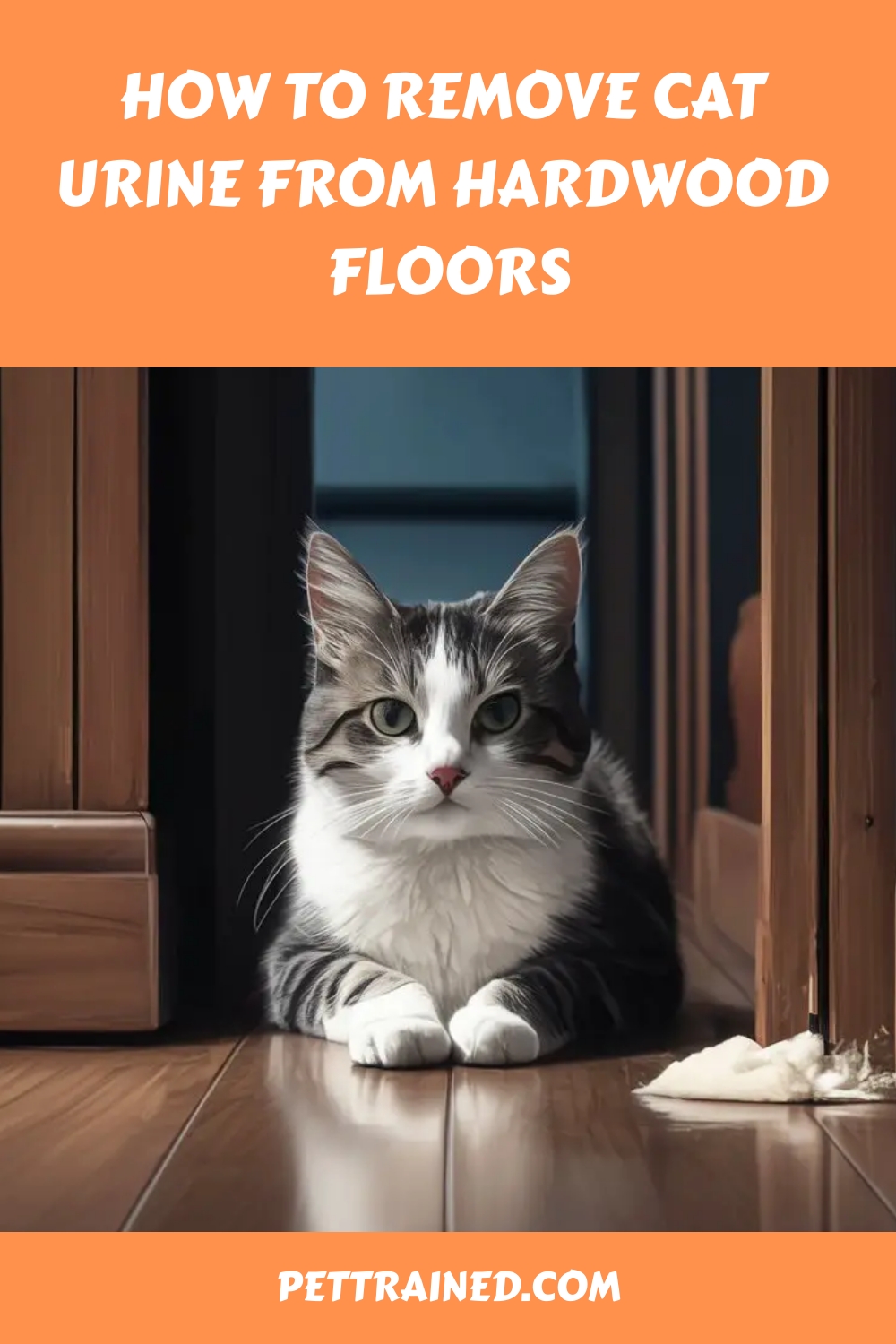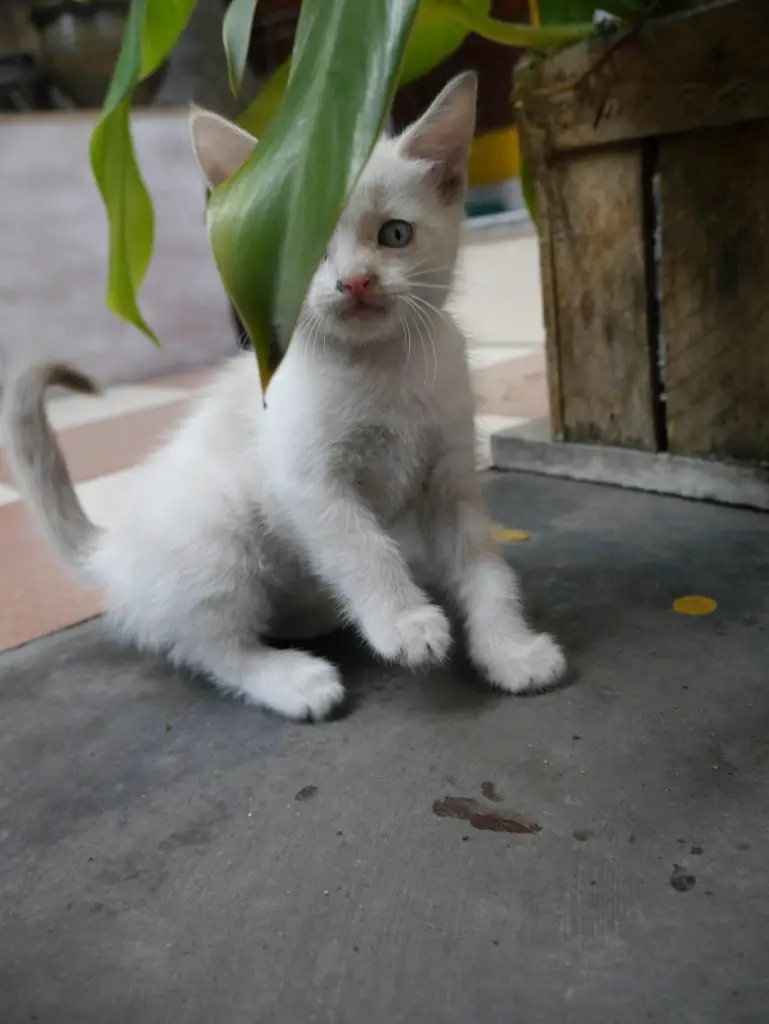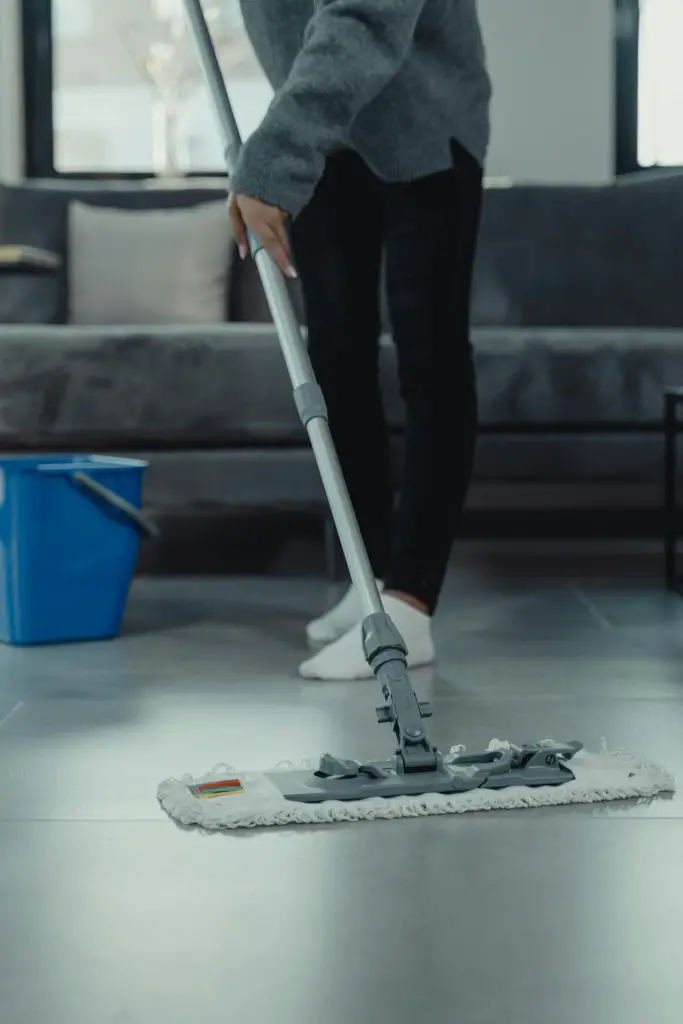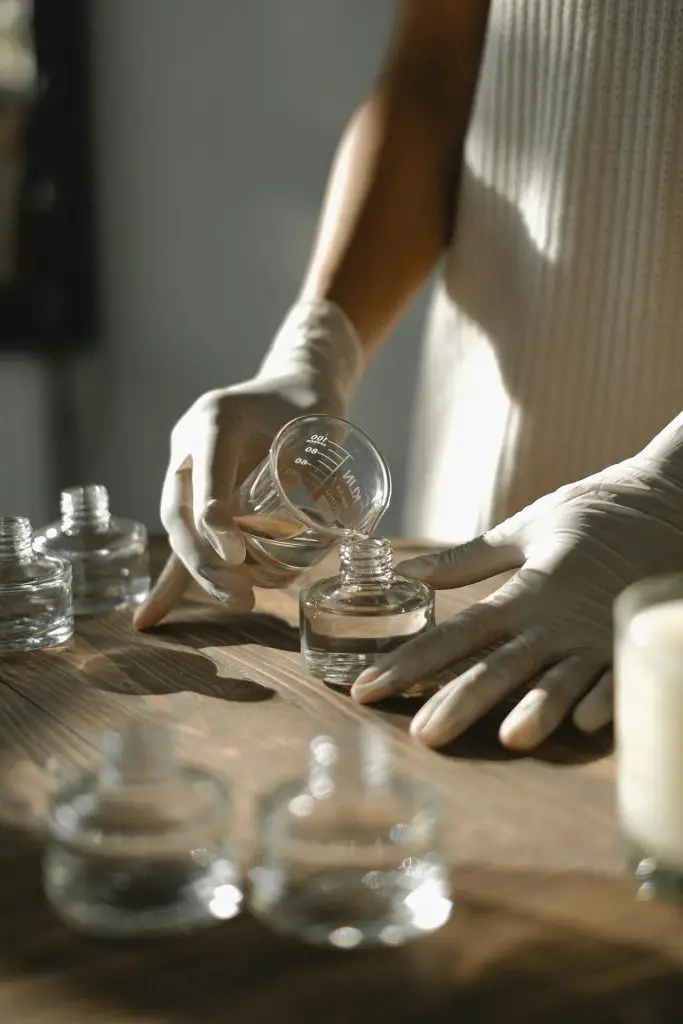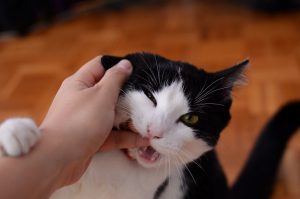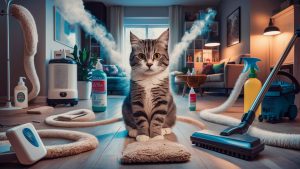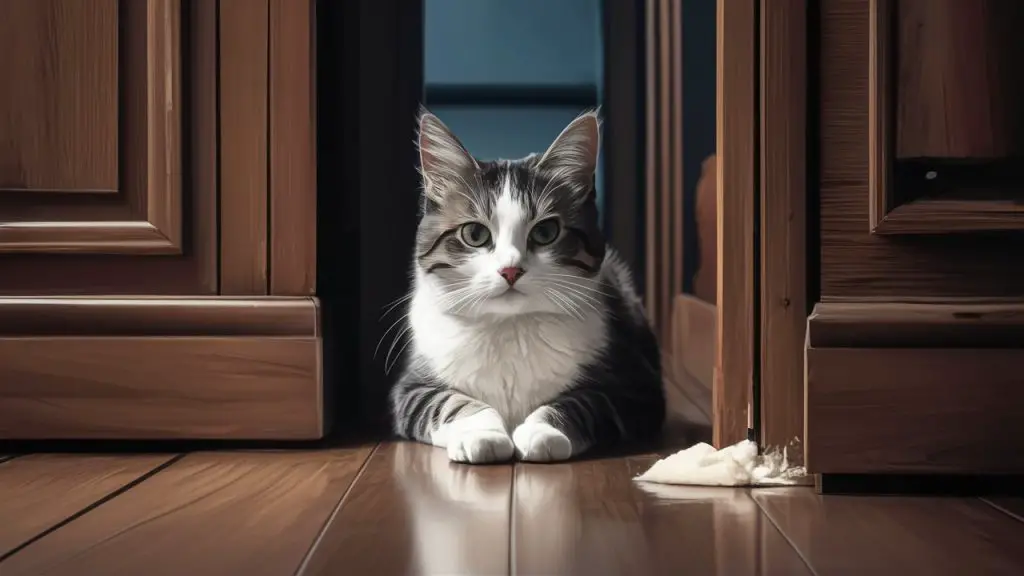
To remove cat urine from hardwood floors, you must act quickly to minimize damage. Uric acid in cat urine can weaken the wood finish and create unpleasant odors if left untreated. Start by blotting the urine stain gently with paper towels or a clean cloth, working from the outside in to prevent the stain from spreading. Next, mix a neutralizing solution using household items like white vinegar, warm water, and baking soda. Apply the solution to the affected area, then rinse and dry thoroughly. By following these steps, you’ll be well on your way to restoring your hardwood floors.
Table of Contents
Key Takeaways
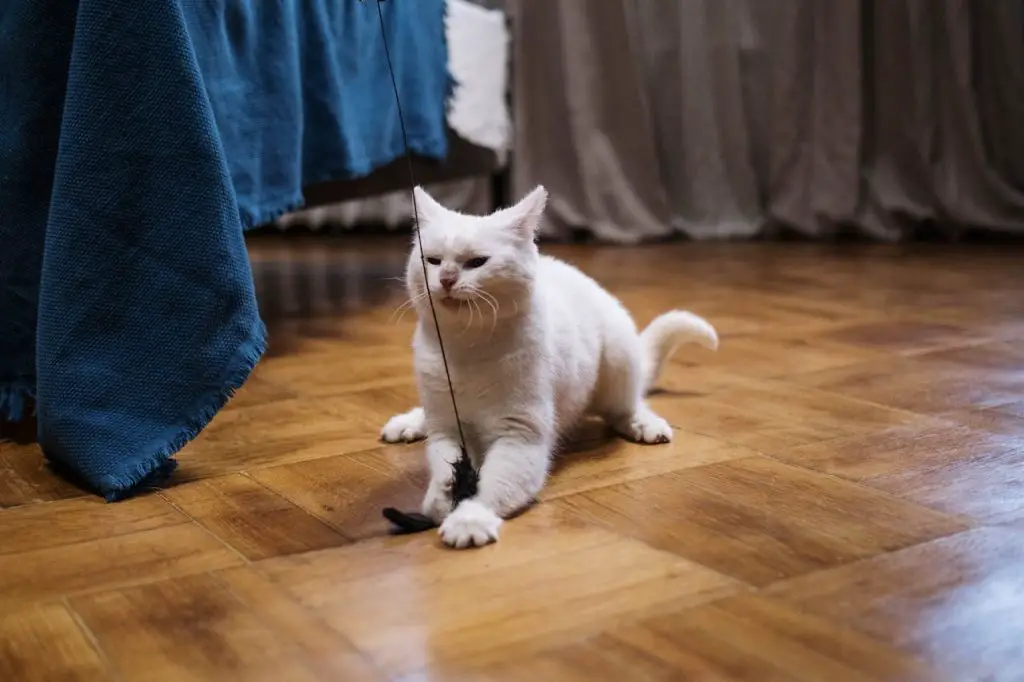
- Blot the urine stain immediately with paper towels or a clean cloth, working from the outside in to prevent spreading.
- Use a neutralizing solution like white vinegar and warm water to counteract the alkalinity of cat urine and eliminate odors.
- Saturate the affected area thoroughly with the cleaning solution, then rinse with clean water and dry in the direction of the wood grain.
- Eliminate lingering odors with odor-neutralizing agents or solutions like baking soda or specialized pet odor eliminators.
Act Quickly to Minimize Damage
Your prompt action is essential in minimizing the damage caused by cat urine on your hardwood floors, as the uric acid in the urine can permanently damage the wood if left untreated for too long.
Cats are naturally inclined to scratch and mark their territory, so accidents can happen even with well-trained pets.
Understanding cat behavior is important in preventing future incidents.
However, when accidents occur, it’s crucial to act quickly to prevent the urine from seeping into the wood.
This post contains affiliate links. However all the information provided on this site are my own honest opinions. See more in Disclaimer.
Hardwood care requires immediate attention to any spills or accidents to maintain its integrity and longevity.
The acid in cat urine can weaken the finish, stain the wood, and create unpleasant odors if not addressed promptly.
Blot the Urine Stain Gently
Now that you’ve taken prompt action to minimize damage, gently blot the urine stain with paper towels or a clean, lint-free cloth to remove as much of the liquid as possible without spreading it further or pushing it deeper into the wood.
Effective blotting techniques are essential for successful stain removal. Focus on soaking up the urine, working from the outside in to prevent the stain from spreading.
Don’t rub the stain, as this can damage the wood finish or push the urine deeper into the wood.
Apply gentle pressure, increasing it gradually as needed, to absorb as much of the liquid as possible.
Also See:
If you’re using paper towels, use a fresh sheet for each blot to prevent re-depositing the urine onto the wood.
Continue blotting until you’ve removed as much of the liquid as you can. If the stain persists, don’t worry – you’ll address it in the next step.
Your goal now is to remove as much of the urine as possible to prevent further damage and make the stain removal process more effective.
Mix a Neutralizing Solution
To counteract the alkalinity of cat urine, you’ll need to mix a neutralizing solution.
You can create this solution using household items or chemical neutralizing agents specifically designed for pet accidents.
Household Items to Use
Frequently, a neutralizing solution made from common household items can effectively eliminate the alkalinity of cat urine that damages hardwood floors.

You’ll need to mix a solution that counteracts the uric acid crystals in cat urine, which can permanently damage your floors if left untreated.
Before buying specialized cleaning products, check if you have the following household items to create a neutralizing solution:
- 1 cup white vinegar: a natural acid that dissolves uric acid crystals and neutralizes the alkalinity of cat urine.
- 1/2 cup warm water: helps to dilute the white vinegar and facilitate its penetration into the wood.
- 2 tablespoons baking soda: helps to absorb the odor and moisture from the cat urine.
- Mild dish soap: helps to break down and remove the uric acid crystals from the wood surface.
Mix the white vinegar, warm water, and mild dish soap to create the neutralizing solution.
Add the baking soda to the affected area to absorb the odor and moisture.
Then, apply the solution and let it sit for about 10 minutes before rinsing and drying the area thoroughly.
Chemical Neutralizing Agents
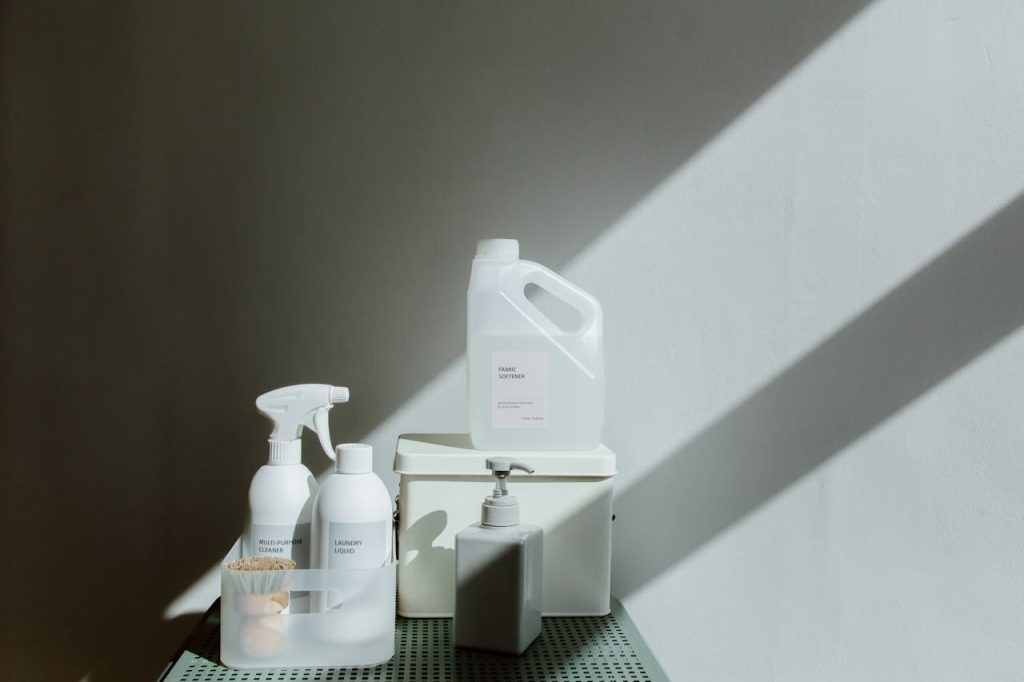
A chemical neutralizing agent specifically designed to counteract uric acid crystals can provide a more powerful solution than common household items for eliminating the alkalinity of cat urine that damages hardwood floors.
You’ll want to mix a neutralizing solution that can break down the uric acid crystals and eliminate the lingering smell.
| Neutralizing Agent | Effectiveness | Recommended Use |
|---|---|---|
| Enzyme cleaners | Highly effective | Apply directly to affected area, let sit for 5-10 minutes |
| Vinegar solution | Moderately effective | Dilute with water, apply to affected area, let sit for 10-15 minutes |
| Commercial neutralizers | Highly effective | Follow product instructions for application and dwell time |
When using a chemical neutralizing agent, make sure to follow the manufacturer’s instructions and take necessary safety precautions. You may need to repeat the process several times to fully eliminate the uric acid crystals and the lingering smell. By using a chemical neutralizing agent, you can effectively remove the alkalinity of cat urine from your hardwood floors and prevent further damage.
Apply the Cleaning Solution
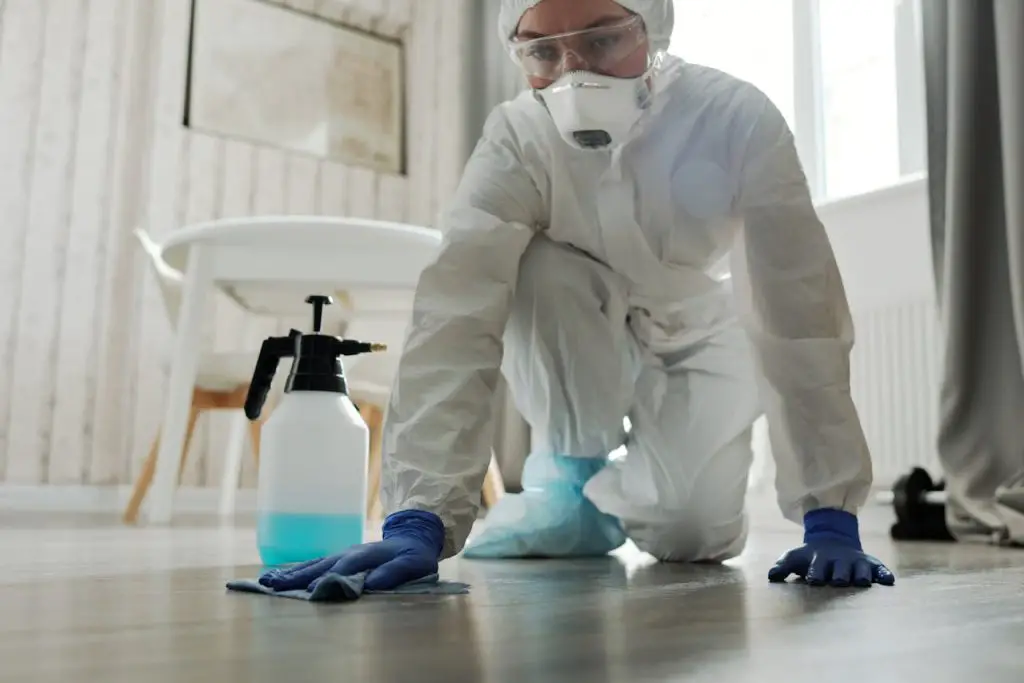
You’re now ready to apply the cleaning solution to remove the cat urine from your hardwood floor.
Make sure to saturate the affected area thoroughly, working from the outside in to prevent spreading the stain.
Neutralize Odor Completely
To neutralize the cat urine odor completely, mix 1 cup of white vinegar with 1 cup of warm water, and add 1 teaspoon of baking soda.
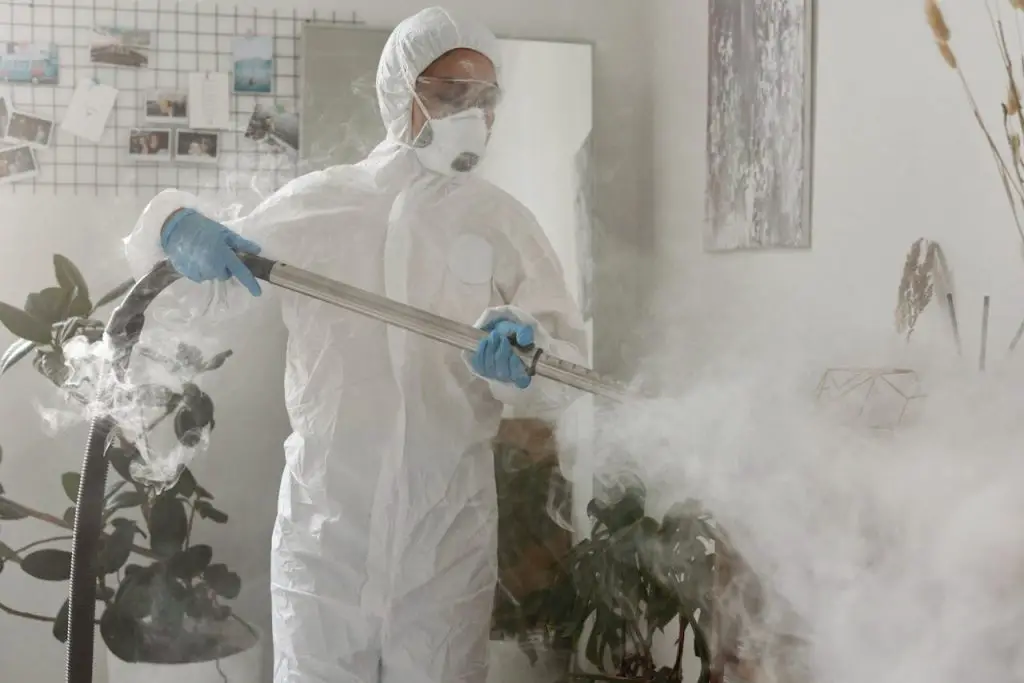
You’ll immediately notice the fizzing action of the baking soda as it starts to break down the uric acid crystals in the cat urine. As you apply the solution to the affected area, the acid in the vinegar will help to neutralize the alkalinity of the uric acid.
This step is essential in eliminating the odor, as cat urine contains uric acid that can permanently damage hardwood floors if left untreated.
Here are the key benefits of using this solution to neutralize the odor:
- Odor absorption: The baking soda absorbs the uric acid crystals, eliminating the source of the odor.
- Neutralization: The acid in the vinegar neutralizes the alkalinity of the uric acid, stopping the odor-causing reaction.
- Prevents re-marking: By eliminating the uric acid, you prevent your cat from re-marking the same spot.
- Hardwood protection: This solution helps protect your hardwood floors from permanent damage caused by uric acid.
Prevent Future Stains
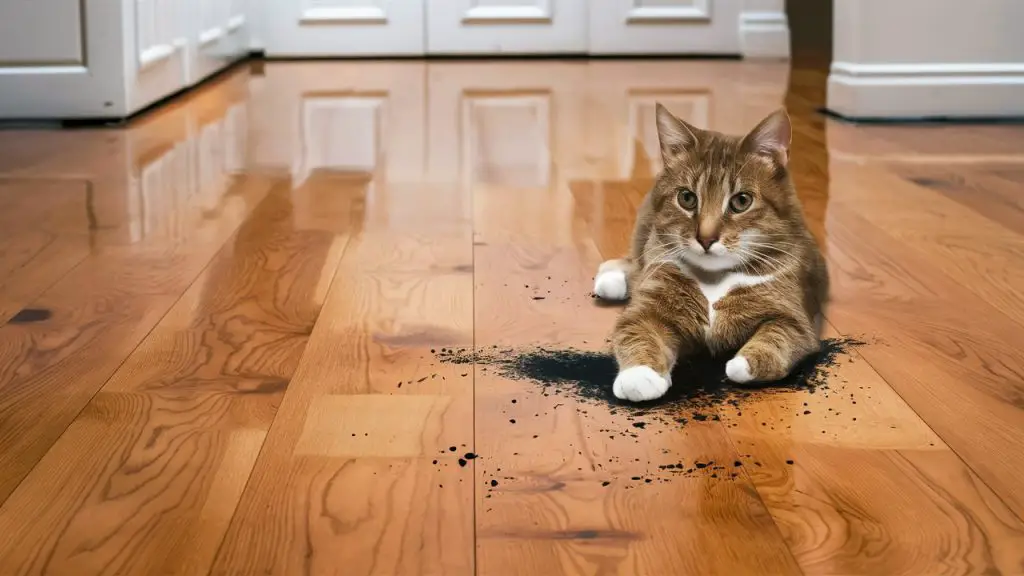
Applying a cleaning solution to the affected area is essential in preventing future stains and protecting your hardwood floors from damage.
Now that you’ve neutralized the odor, it’s time to take steps to prevent future accidents. You’ll want to identify the underlying causes of your cat’s behavior and address them.
Is your cat’s litter box clean and accessible? Are there enough litter boxes in your home? Cats are sensitive to odors and textures, so make sure you’re using a litter that your cat finds acceptable.
Trending in Cats:
To prevent future stains, you’ll also want to contemplate applying a stain-resistant coating to your hardwood floors. This will help protect the wood from damage and make cleanup easier.
Additionally, contemplate placing area rugs or mats in high-traffic areas to catch any accidents before they reach the hardwood.
Rinse and Dry the Area
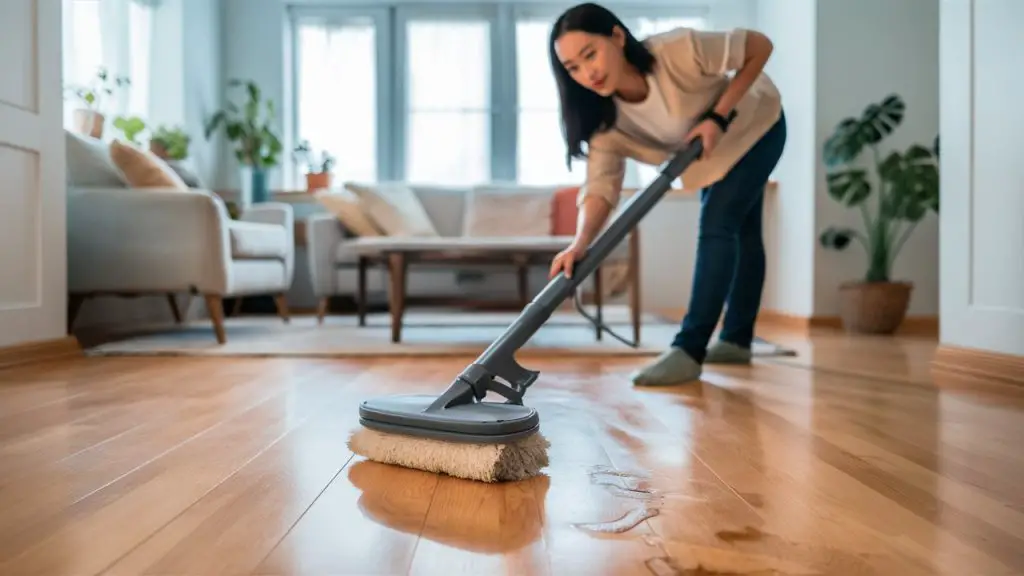
Rinse the affected area thoroughly with clean water to remove any remaining cleaner and cat urine residue.
This step is essential in hardwood care, as any lingering substances can damage the finish or harm the wood.
Use a clean mop or a microfiber cloth to rinse the area, working from the outside in to prevent spreading the contamination.
After rinsing, use cleaning techniques to dry the area completely. You can use a wet/dry vacuum or dry towels to remove excess moisture.
Here are key considerations to keep in mind:
- Avoid over-saturation: Hardwood floors can withstand some moisture, but excessive water can damage the finish or cause warping.
- Dry in the direction of the wood grain: This helps prevent water from seeping between the boards.
- Use a clean towel to blot the area: Don’t rub the towel back and forth, as this can scratch the finish.
- Monitor the area for water spots: If you notice any water spots, repeat the rinsing and drying process as needed.
Eliminate Lingering Odors
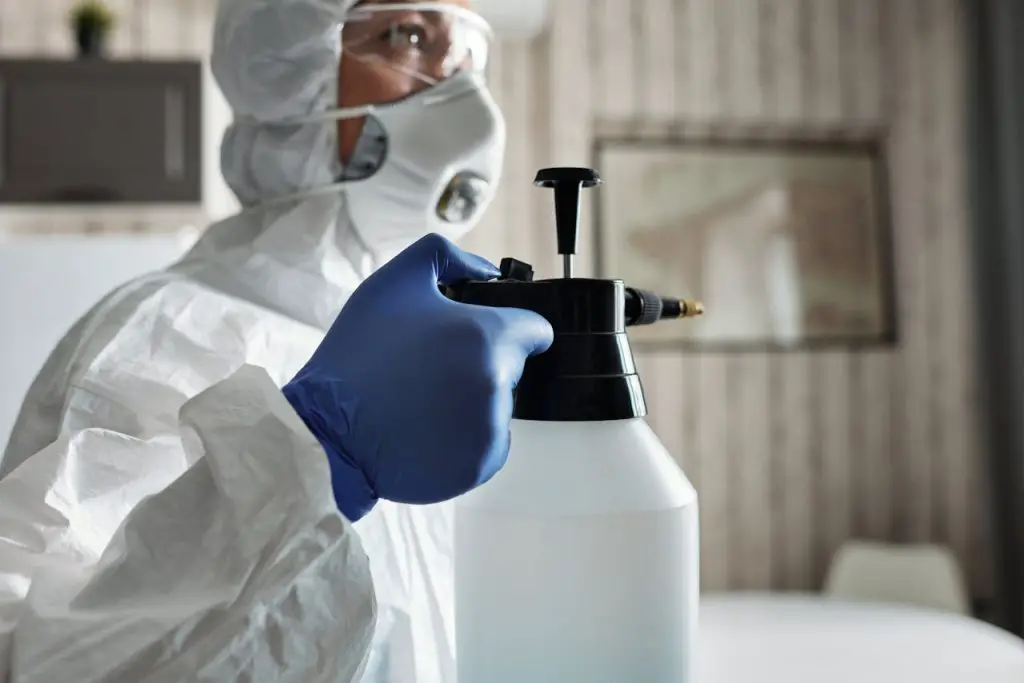
Once you’ve thoroughly rinsed and dried the affected area, your next step is to tackle any lingering cat urine odors that may still be present in the hardwood.
To eliminate these odors, you’ll need to use odor absorption techniques that target the uric acid crystals in cat urine.
Enzymatic cleaners are your best bet, as they contain enzymes that break down these crystals, eliminating the source of the odor.
| Odor Elimination Methods | Effectiveness |
|---|---|
| Enzymatic cleaners | Highly effective in breaking down uric acid crystals |
| Baking soda and vinegar | Can neutralize odors, but may not eliminate them entirely |
| Essential oils | May mask odors, but don’t address underlying causes |
| Hydrogen peroxide | Can damage hardwood, not recommended |
When using enzymatic cleaners, follow the manufacturer’s instructions and apply the product to the affected area. Let it sit for the recommended amount of time before rinsing and drying. If the odor persists, consider repeating the process until the odor is gone. Remember to test a small area of the hardwood first to verify the cleaner doesn’t damage the finish.
Prevent Future Accidents
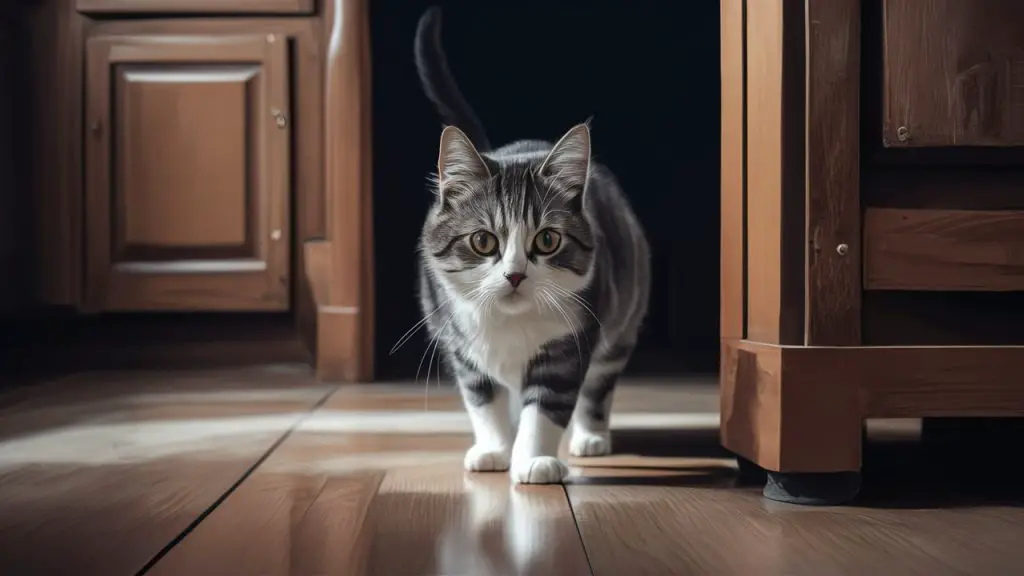
To safeguard your hardwood floors from future cat urine accidents, you’ll need to implement effective deterrents and address underlying issues that may be contributing to your cat’s behavior.
Understanding cat behavior is key to preventing future accidents. Cats often urinate outside the litter box due to medical issues, stress, or inadequate litter training.
To address these issues, consider the following:
- Provide an adequate litter box: Guarantee the litter box is large enough for your cat, and provide one litter box per cat in the household.
- Maintain proper litter box hygiene: Scoop out solid waste daily and change litter completely every 7-10 days.
- Increase litter box accessibility: Place litter boxes in quiet, easily accessible areas of the home.
- Reward good behavior: Positive reinforcement with treats and praise can help reinforce proper litter training.
Frequently Asked Questions
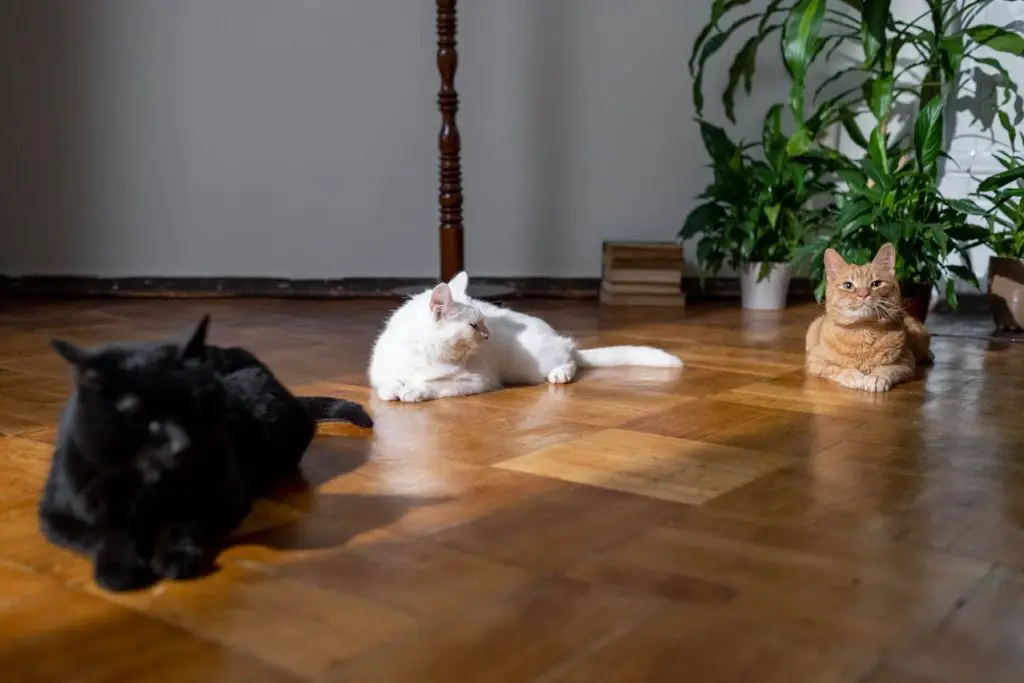
You’re walking a tightrope if you’re considering bleach to remove cat urine stains. Instead, opt for gentler bleach alternatives that won’t damage the wood. These will help break down the uric acid crystals and eliminate the pungent urine odor.
“You’ll need to use enzyme cleaners specifically designed for pet stain removal to break down the uric acid crystals in the old, dried cat urine stains; apply the cleaner, let it sit, and then blot and rinse.”
When using hydrogen peroxide to remove stains, you risk damaging your hardwood floor. The oxidizing properties can break down the wood’s finish or alter its color, so you’ll want to test it on an inconspicuous area first.
“Can you harness the power of steam to banish cat urine stains? Yes, you can use a steam cleaner to remove cat urine from hardwood floors, as it’s effective in eliminating urine odor and stains.”
You’ll want to look for hardwood floor finishes specifically designed with cat urine resistance in mind, such as those containing polyurethane or wax, which provide a barrier against acidic substances like cat urine.
